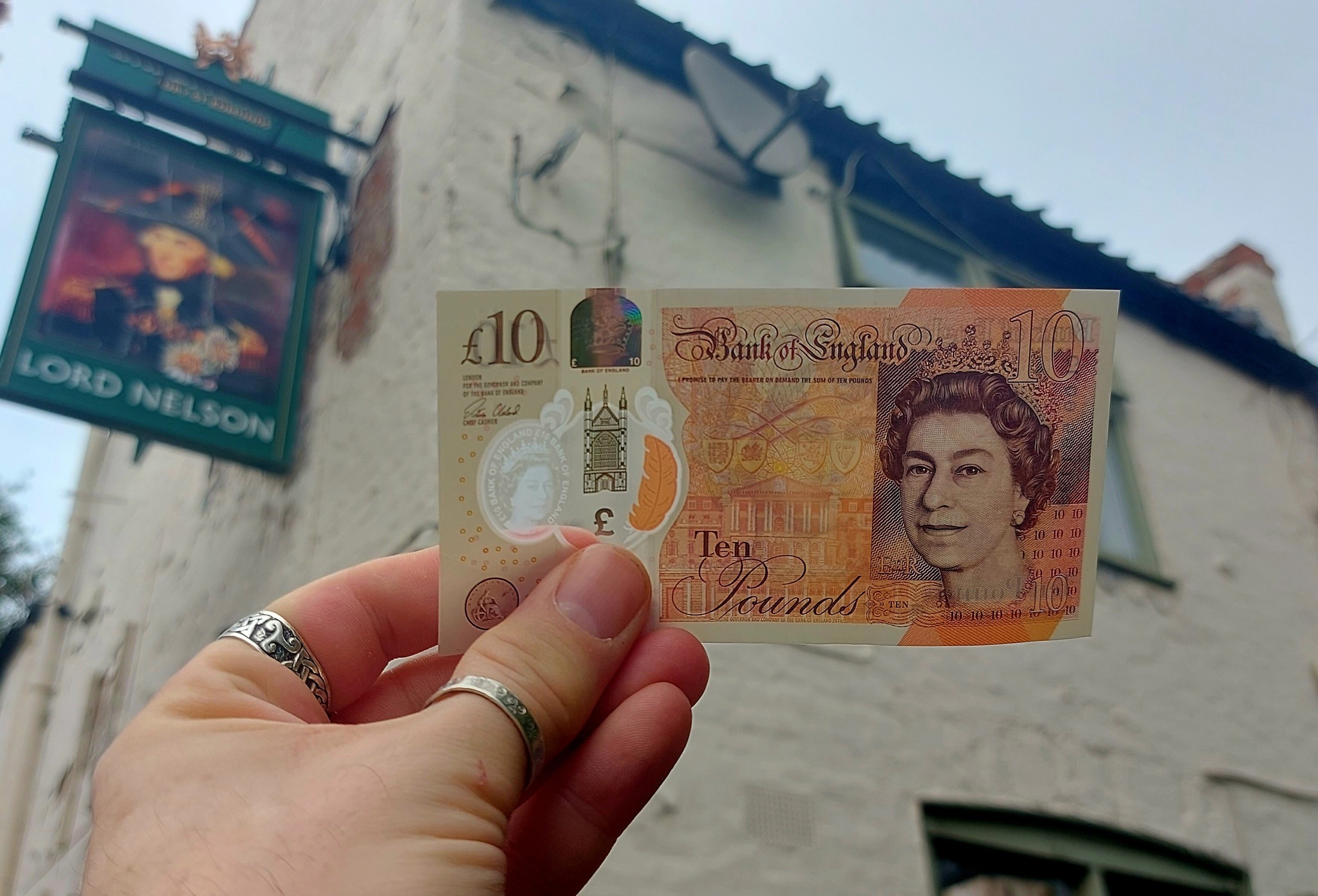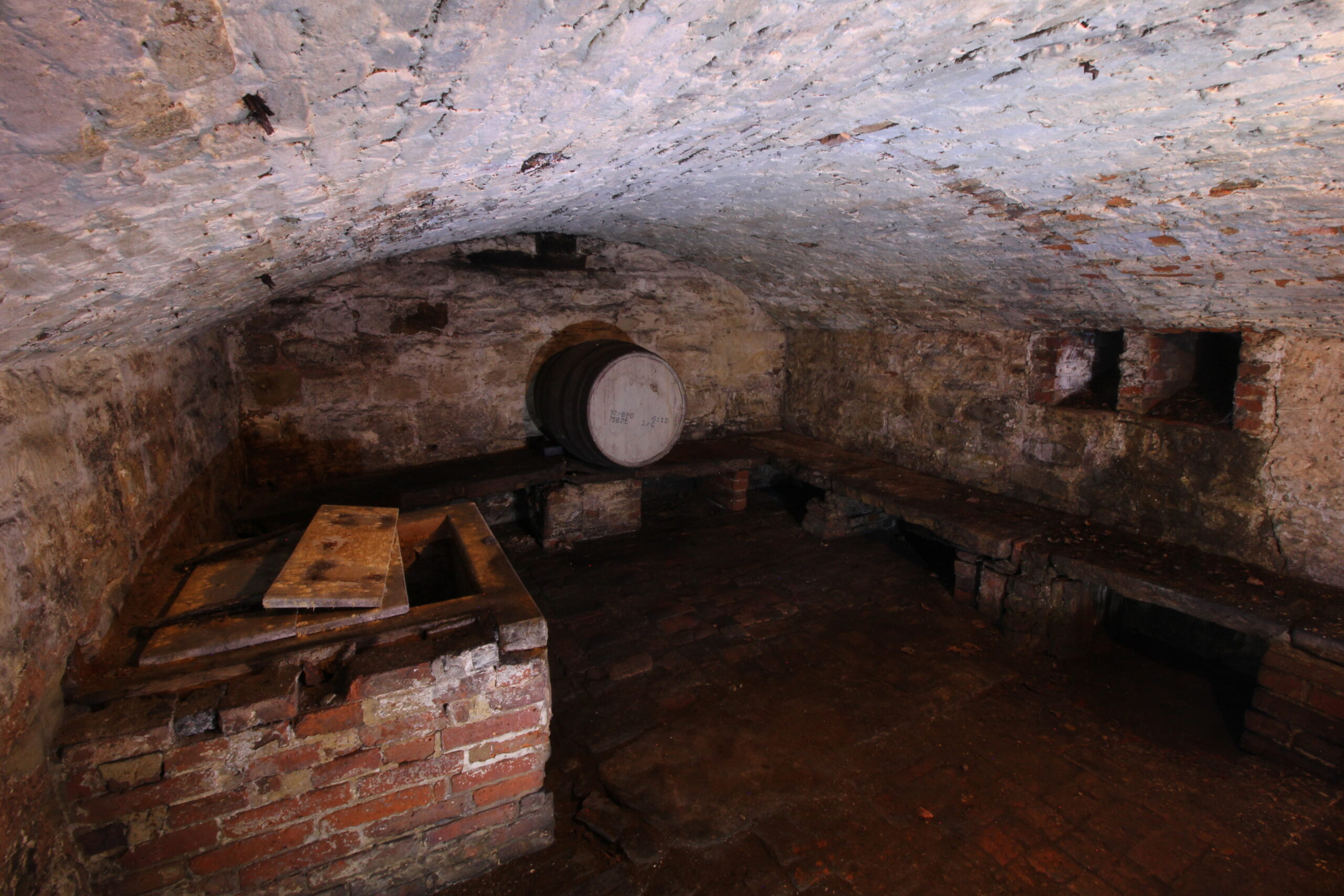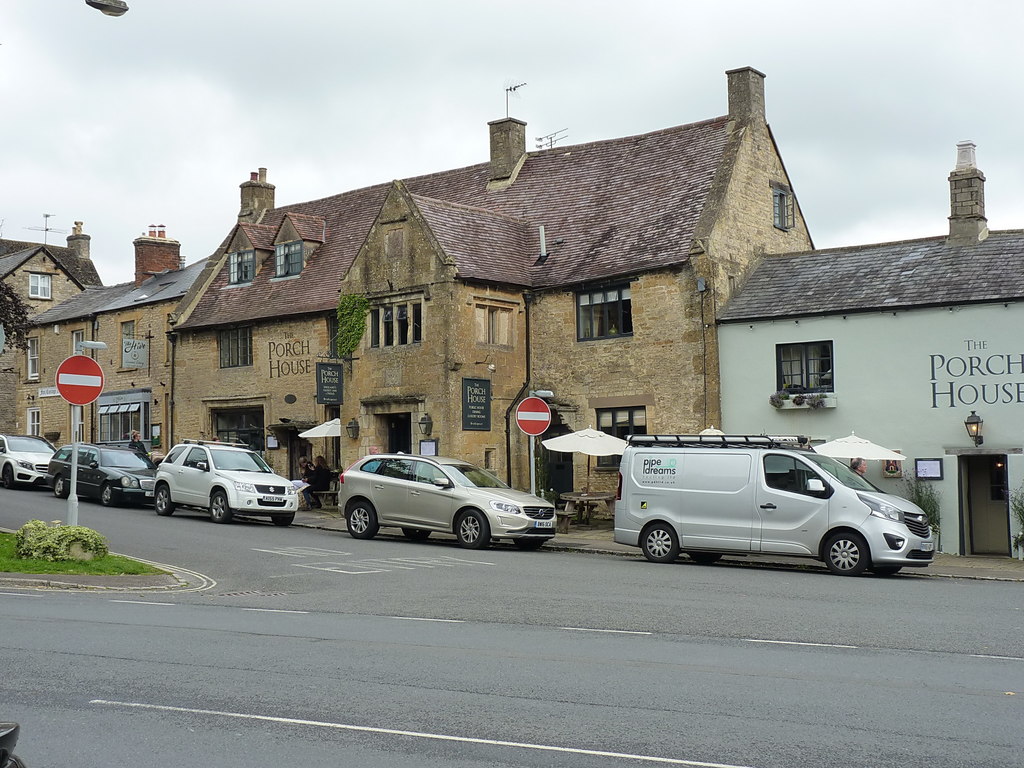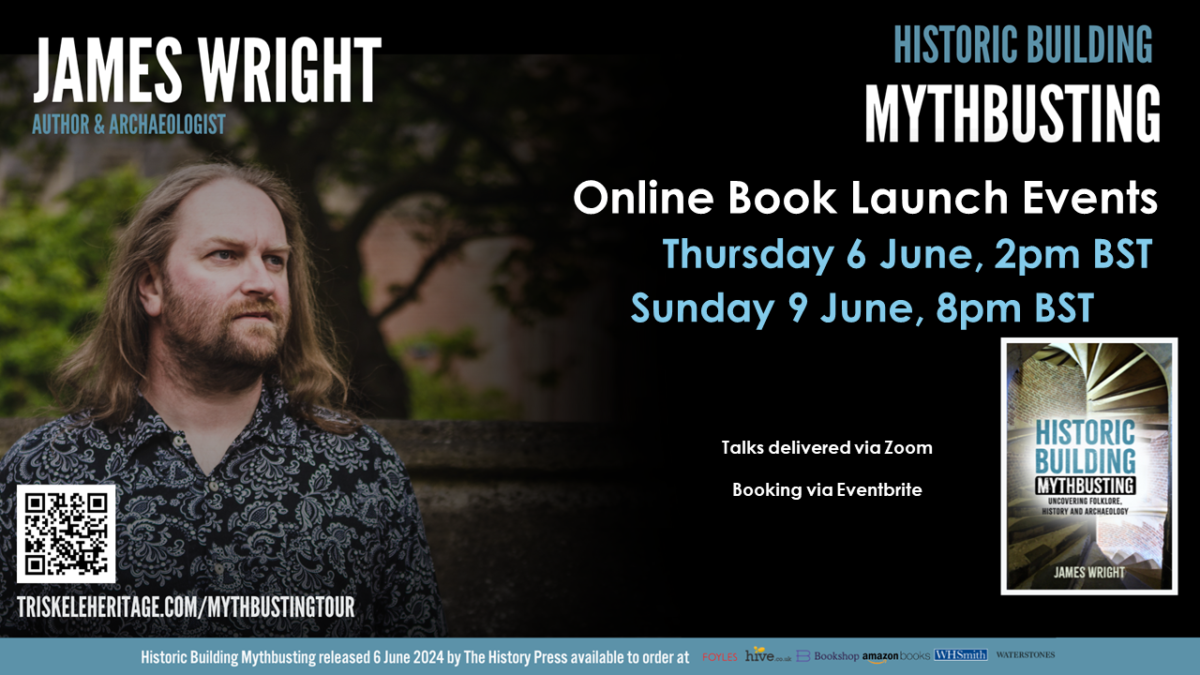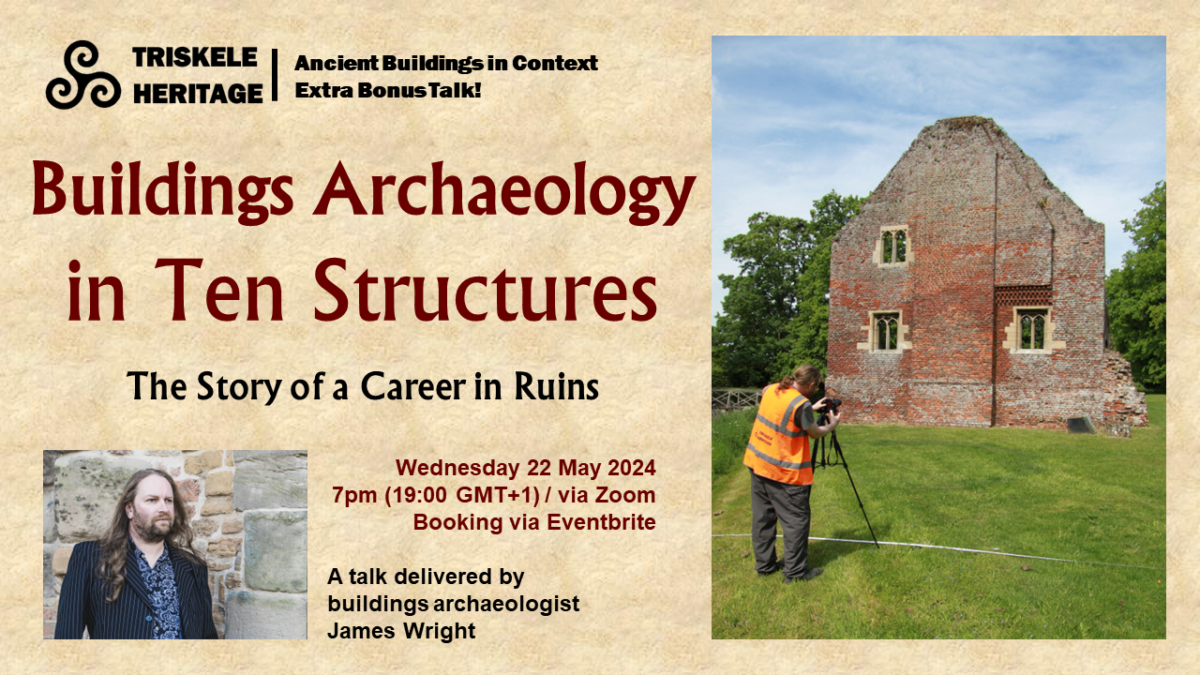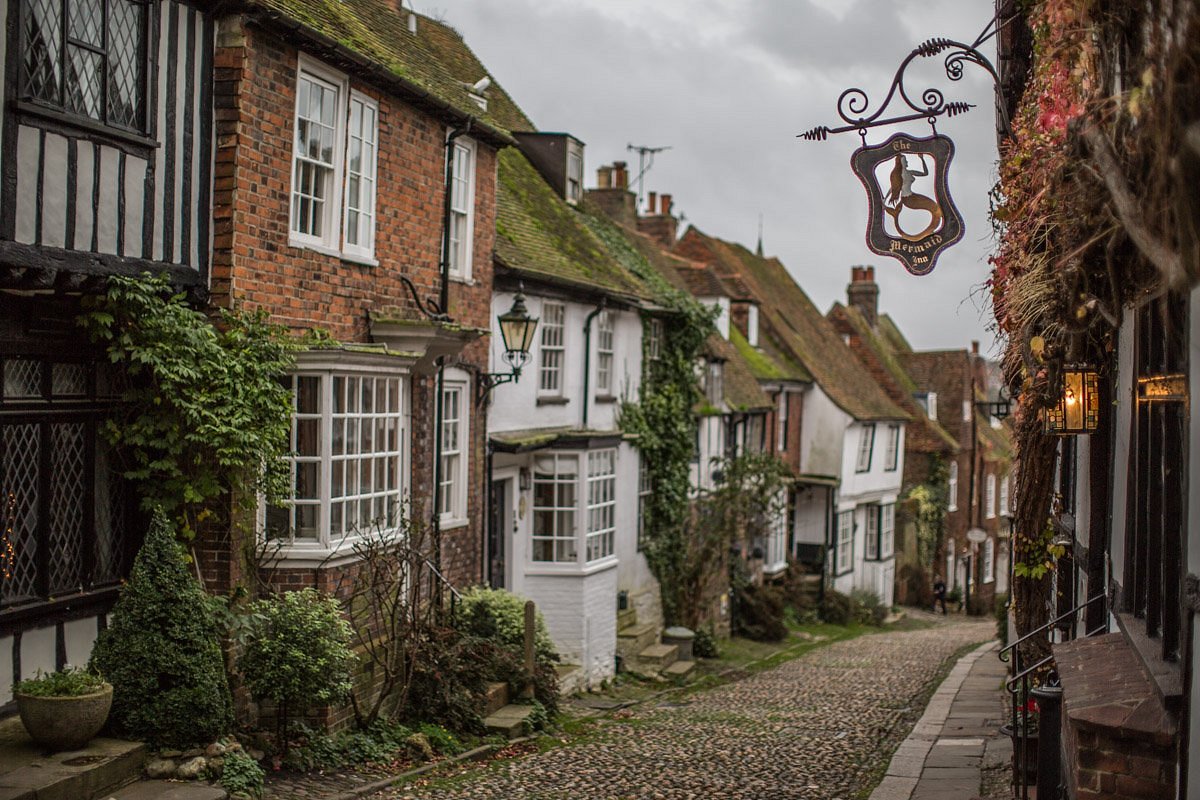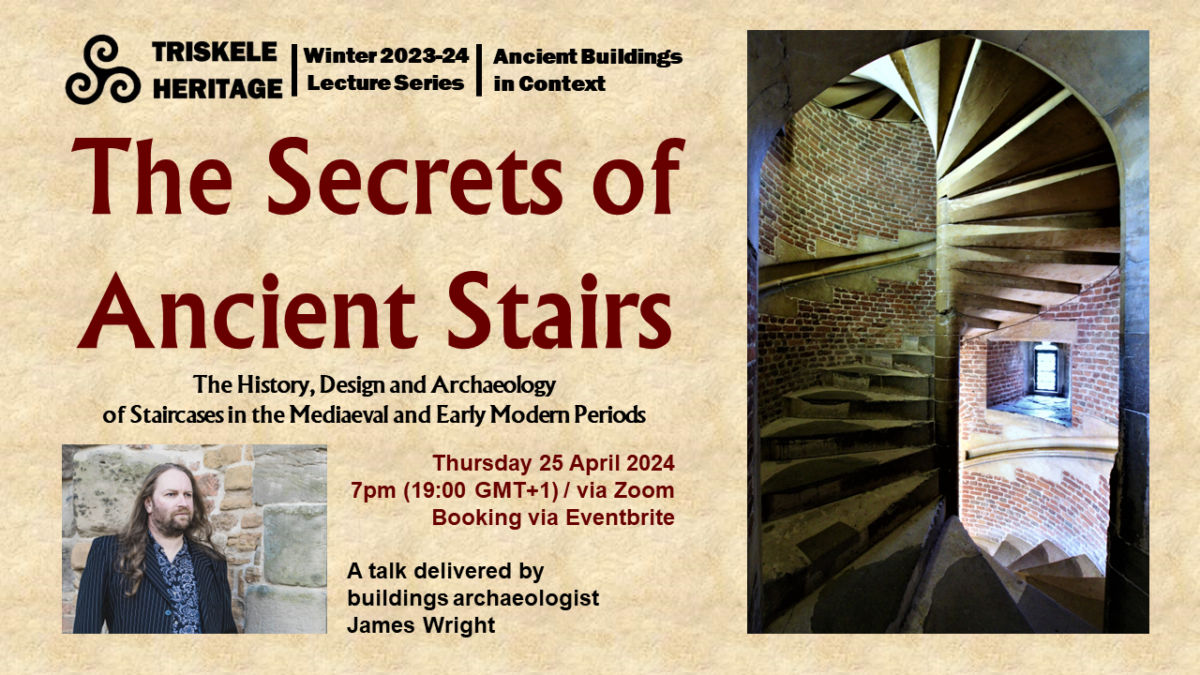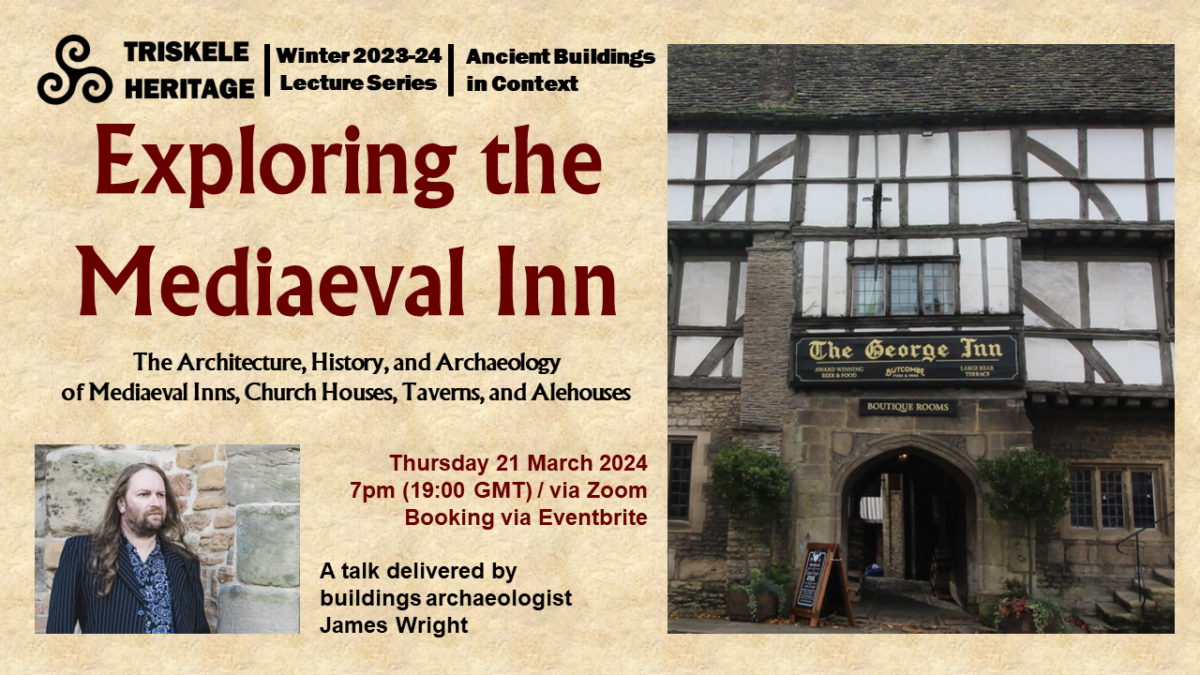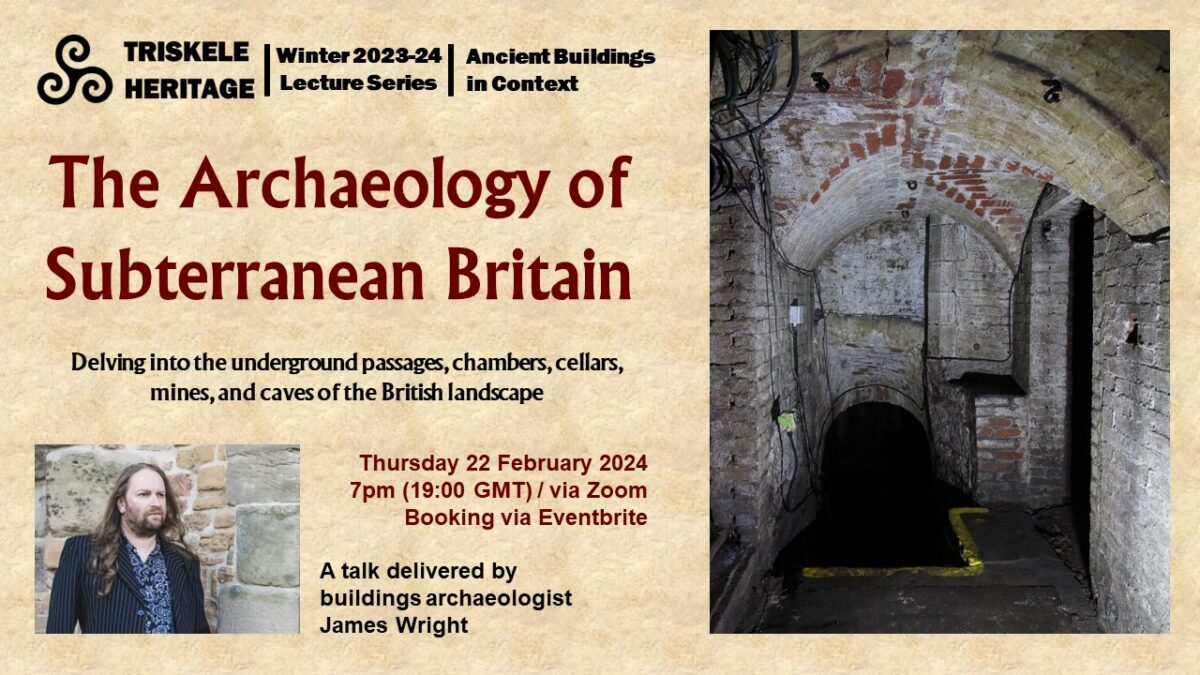7 September 2025
To celebrate the fifth anniversary of the Mediaeval Mythbusting Blog, I am going to ask an awkward question. Users of both traditional and social media love a good heritage story… but can we trust those stories when there is money involved?
The sad fact is that facts can sometimes be rejected in favour of an eye-catching headline or attention-grabbing content. There is an assumption that readers and viewers will only engage with a story if it is outrageous or bold. In this heady mix, the truth can frequently be overlooked. Sometimes this could be an innocent repetition of “common knowledge” yet, sometimes, the audacious may be cynically deployed for financial gain.
This mythbusting blog will look at how the spread of unverified stories and pseudo-archaeology, connected to ancient buildings, might be linked to monetised content.
Origin Stories

The Mermaid Inn, Rye, East Sussex (Picture Source: Tony Hisgett / Wikimedia Commons)
Looking for the origin of stories can reveal a great deal about the individuals, communities, and societies that relay them. I’m interested in the nuts and bolts of tales. Frequently, I want to find the stories behind the stories about mediaeval buildings.
The origins of some of the myths that I’ve looked at on the blog probably lie in the more distant past. Secret passage rumours at Stone Priory (Staffordshire) have been repeated since at least 1719. The belief that ship timbers were very commonly reused on land has some limited basis in the practises of coastal populations from the later eighteenth century. The idea that stonemason’s marks were akin to artist’s signatures seems to have a source during the nineteenth century.
However, many of the myths about buildings could have much more recent, and perhaps financially driven, sources. For example, I’ve looked at the claims to antiquity made by the licensees of some pubs which may be linked to marketing strategies. The assertion that the Mermaid Inn at Rye (East Sussex) dates to 1156 and 1420 seems to have first been made during a promotional campaign after the pub changed hands in the mid-1990s. Similar stories may have been developed by the incoming licensees at Sean’s Bar (Athlone, County Westmeath, Ireland) and Porch House (Stow-on-the-Wold, Gloucestershire). In all three cases, the claims that the buildings had been active as pubs from questionably early dates seem to have emerged very soon after new owners took on the businesses. It is compelling to consider that this could have happened as part of a deliberate scheme to appeal to customers by creating a novel “history” of the property for financial gain.
The Value of Heritage

MB Archaeology and Triskele Heritage community outreach project at Old Hall Barn, Dronfield, Derbyshire (Picture Source: James Wright / Triskele Heritage)
Establishing heritage offers the possibility of profit. Using the latest available data, gleaned during 2022, Historic England have estimated that the heritage sector contributes approximately £44.9 billion in Gross Value Added to the British economy. They concluded that: ‘The economic value of heritage stems from various sectors and subsectors; from archaeology and conservation, to hospitality, construction, and public services.’
Many individuals, companies, and organisations take their responsibilities to heritage seriously and offer factually accurate information to the public based on solid research. However, a significant amount of heritage presentation is inaccurate. Unfortunately, misleading or unverified stories may be part of the business model of a company.
‘Publish and be damned!’

Bingley Arms, Bardsey-cum-Rigton, West Yorkshire (Picture Source: Ian S / Wikimedia Commons)
Heritage stories are popular in the media and there is an understandable expectation that traditional media outlets, such as newspapers and television stations, will fact-check rigorously. Many organisations claim to make a virtue of their accuracy. For example, the Yorkshire Evening Post are signed up to the Independent Press Standards Organisation’s Editor’s Code of Practice. They promise that ‘When alerted to errors, we should correct the record promptly and transparently’.
Sadly, this has not been my experience with the Yorkshire Evening Post. In March 2023, they published an article which claimed that the Bingley Arms at Bardsey-cum-Rigton (West Yorkshire) ‘has stood strong for over 1000 years, dating back to sometime between AD 905 and AD 953’. Furthermore, ‘it was utilised as a hiding place for Catholic priests and those threatened by the Dissolution of the Monasteries in 1536.’ I contacted the newspaper several times, via their recommended channels, to offer a fully referenced debunking of the claims. The building probably dates to no earlier than the mid-eighteenth century and does not seem to contain any priest hides. Yet my communications were completely ignored. So much for journalistic integrity and promises to abide by a code of conduct.
The claims that the Bingley Arms is a tenth century building did not originate in a peer-reviewed archaeological journal article. Instead, they seem to have first appeared in The Sun newspaper (4 November 1979, page 12). There is possibly no evidence to back up the story. We might ask if The Sun – a paper with a questionable history of publishing misleading stories – is even a reliable source? However, with the story established, it may be that the later licensees of the pub have been playing along because the claims potentially give them an advantage for drawing in customers.
Meanwhile, a partisan local media, such as the Yorkshire Evening Post, may also have much to gain by repeating the story. As a commercial media outlet, with a strong online presence, much of the business model of the newspaper may be largely driven by advertising, subscriptions, and sponsored content. The published stories must be eye-catching to attract readers. Once the newspaper has been bought, or the article clicked, the reader is essentially exposed to paid for content. It is in the financial interest of the media outlet to sensationalise stories to justify their revenue – the more sales or clicks for the story, the greater the reach and the bigger the revenue. It’s an old game in a new world.
It’s not just local media that may have sensationalised heritage. In February 2022, it was announced that The Fighting Cocks at St Albans (Hertfordshire) was ‘forced to close after 1,229 years’ of service. National media, including the Daily Mail, picked up the story uncritically. So did international outlets such as The Washington Post. This was a big scoop. ‘Britain’s oldest pub’ – alleged to have been established in 793 – was closing. There does not seem to have been room in the copy to include fiddly details such as fact-checking based on research. The pub historian Jon Mein has demonstrated that The Fighting Cocks began life as a monastic dovecote, dated c 1400, which was re-sited for use as a domestic house around 1600. It was open as an alehouse, known as The Three Pigeons, by 1756 and was called as The Fighting Cocks by 1806. The claims to be an early mediaeval pub did not begin to appear until a marketing campaign in the 1890s (Wright 2024, 174-75). The closure of an obscure eighteenth century alehouse was probably never going to attract those all-important clicks so, it seems, there was no need for fact-checking.
Auntie Beeb

The industrial water conduit at Tintern, Monmouthshire (Picture Source: Western Power Distribution)
If we take away the immediate financial incentive out of sales and clicks – by removing advertising, subscriptions, and sponsored content – does this improve the accuracy? Unfortunately, it seems this may not be the case. If the publicly funded BBC can opt for a spooky, mysterious, or arcane headline they absolutely will. Their journalists have an especial fascination with secret passages. In March 2021, the BBC reported on a ‘secret medieval tunnel’ at Tintern (Monmouthshire). This turned out to be an industrial water conduit for a post-mediaeval mill. In May 2023, Auntie Beeb went for ‘House over Reformation tunnel goes on the market’ at Fowlmere (Cambridgeshire). Further research demonstrated that the ‘Reformation tunnel’ was probably some chalk adit mines.
My favourite BBC example comes from July 2006. The hapless national broadcaster reported on ‘Man’s bid for Holy Grail search’ in tunnels alleged to lie beneath Lincoln Cathedral. If the journalist had considered the story in any depth, they would have realised that the claims for the Holy Grail to be hidden below Lincoln originated just a few short months after the release of the film of Dan Brown’s The Da Vinci Code. In the movie, Lincoln Cathedral featured as a location in an imagined story about the hunt for the Holy Grail. The plot seems to have inspired local speculation which the BBC then reported uncritically.
Is this just innocent fun, though? Potentially not. It is a matter of public record that: ‘Trust is the foundation of the BBC – we’re independent, impartial and truthful’. Yet, as an organisation supported by the licence payer, the BBC also has an imperative to ensure its content has sufficient reach to justify its funding. Consequently, the decision to uncritically publish dubious stories about secret passages may once again be driven by clicks despite an Editorial Policy which claims to prize accuracy. Its both maddening and saddening.
Mitigating Circumstances?

The Four Crosses, Hatherton, Staffordshire (Picture Source: Row17 / Geograph)
Perhaps I’m being cynical. Are there sometimes mitigating circumstances for the inaccurate presentation of heritage by landowners, journalists, and other content creators?
In late October 2013, The Independent published a piece about The Four Crosses at Hatherton (Staffordshire) under the headline ‘Britain’s most haunted pub goes on sale in time for Halloween’. It included the following claims: ‘The pub was built in 1636 as a coaching inn from shipping timbers almost 1,000 years old, according to Haunted Rooms, and several secret passages have been discovered within the building during the twentieth century.’ It seems that the only accurate statement here is that the building probably does date to 1636. The rest is likely unfounded hearsay.
How might such errors have been made? Probably through the nature of the story itself – a quick seasonal piece about a haunted pub for the Halloween period. The journalist was a digital reporter hired to create relentless popular copy to drive website clicks. It seems inevitable that the hard-pushed writer probably did not have time in the budget for much fact-checking as deadlines were looming.
The inaccurate data was lifted entirely from the Haunted Rooms website – which is usually the first result that comes up on an internet search for the building. Haunted Rooms is a company that sells paranormal experiences in ancient buildings. Historical accuracy may not be the driving force behind this commercial enterprise, whereas creating an intriguing and spooky ambiance seems to be part of the business plan. Reference to ship timbers and secret passages is exactly the right sort of atmosphere to complement a paranormal experience. A busy journalist seems to have mistakenly trusted an unreliable source and repeated what may be inaccurate information as fact.
Unfortunately, fact-checking may even be overlooked by historians creating online content. The story that all castle spiral staircases turned clockwise to advantage right-handed defenders is a simple tale that can be relayed quickly and easily. Yet it has also been thoroughly debunked. However, the historian and social media content creator, Alice Loxton repeated this story in October 2022, via a monetised TikTok account, to approximately 881.8K followers. The video went viral. Similar happened when an anonymous man on the Knockderry Castle Instagram account also explained the story in May 2024. Fifteen months on and that video has garnered 686, 782 “likes”.
Knockderry Castle and Alice Loxton’s followers expressed agreement with the spiral staircase story in their comments under the videos. This probably happened because the popular tale confirms what most people understand about mediaeval castles – that they were military defensive fortifications. However, this is a questionable assertion that I have looked at on the blog previously. I have attempted to contact both Alice Loxton and Knockderry Castle to discuss their inaccurate content but neither has responded or edited their videos.
Perhaps we can give some social media content creators the benefit of the doubt? Their online reach is generally a good thing for the heritage world. They are putting British history in front of a worldwide audience. The factual errors are unlikely to be malicious and are probably accidental. In repeating a story that is “common knowledge” it may not have occurred that incorrect information was being passed on. When producing significant quantities of viral videos fact-checking may be a limited priority.
Hmmm. Not sure that justification stacks up.
The problem is that when repeated by a media outlet, a historian, or a heritage attraction the stories were put into the public domain by apparent trustworthy figures of authority. The result is that the tales have garnered a certain level of respectability and legitimacy by association. Fact-checking resources are out there, and it is genuinely the responsibility of content creators to use them. Equally, there is a responsibility to respond, and edit where appropriate, when inaccuracies are brought to light. Unfortunately, I think that the mitigating circumstances might have vanished. Ultimately, the truth matters and should not be rejected due to tight deadlines, revenue streams, and virality. Such decision-making pushes us into a post-truth environment where the rapid creation of monetised content rejects accuracy for the clicks.
Pseudo-archaeology

Sinai House, Burton-on-Trent, Staffordshire (Picture Source: Historic Houses)
Potentially, there may also be an even darker aspect present. It is entirely possible that the deliberate spread of unverified claims, fabrications, and conspiracy theories could be cynically harnessed for financial gain. One monetised organisation with a dubious reputation for spreading misinformation is Ancient Origins. They claim to: ‘highlight the very latest archaeological findings, peer-reviewed academic research and evidence, as well as offering alternative viewpoints and explanations of science, archaeology, mythology, religion and history around the globe.’ Here we see ‘peer-reviewed academic research’ given equal weighting to ‘alternative viewpoints’. That is a major red flag.
Those ‘alternative viewpoints’ may come across as speculative through to distinctly suspect. For example, the posts made by Ancient Origins betray a wild fascination with the Knights Templar. One theory that they have popularised is that the Templars were founded by ‘a wave of European royalty descended from Jewish Elders that had fled the Holy Land around 70 AD, when it was invaded by the Romans.’ Elsewhere, Ancient Origins have speculated that the Templars were the guardians of the Holy Grail, Ark of the Covenant, and the Ten Commandments. In another article, it is claimed that the treasures of the Templars were deliberately hidden at locations including Rosslyn Chapel (Scotland), Oak Island (Canada) and Bornholm (Denmark).
Such esoteric conspiracy theories about the Templars are widespread. They were first introduced by German Freemasons in the 1760s to justify and legitimise their own activities as the apparent successors of Templar knowledge. This narrative later came to prominence due to criticisms levelled by the historian Joseph von Hammer-Purgstall in the 1810s. By the later part of the century the popular connection between the Templars and esoterica, including the Holy Grail, had become established. This undercurrent of belief eventually went mainstream in 1983 with the publication of Michael Baigent, Richard Leigh and Henry Lincoln’s The Holy Blood and the Holy Grail. This book later formed the basis for Dan Brown’s novel The Da Vinci Code. Since the release of these bestsellers, the Templar historian Helen Nicholson (Cardiff University) has noted that: ‘Many ‘discoveries’ about the Templars have followed, many of which are little more than fantasy, with less basis in actual historical events than most historical novels’ (Nicholson 2010, 268-72).
The reach of Ancient Origins is significant. As of August 2025, their followers numbered 24.6K, on Youtube, 38.3K on TikTok, 325K on X (which I still prefer to call Twitter), and 1.3 million on Facebook. And there lies a great problem. The reach of clickbait accounts, peddling what may well be pseudo-archaeology, is much greater than those trying to counter the misinformation. Twitter may be a platform in decline, but what appears to be a pseudo-archaeology account – Historic Vids – still has a staggering 5.5 million followers. Meanwhile, my fellow mythbuster, the Fake History Hunter has a relatively modest 269.8K followers and I am languishing with just 16.6K followers.
We live in an age when the widely-discredited journalist Graham Hancock received a reported 25 million viewing hours in a single week for his Netflix series Ancient Apocalypse. In this series, Hancock peddled stories, which have been entirely debunked, of how non-European civilisations were taught to construct impressive structures by a technologically advanced culture of white people which survived an Atlantean-style flood. Furthermore, Hancock’s profile has been given further boost by no less than twelve appearances on the Joe Rogan Experience. This is currently ranked, globally, as the most listened to podcast with followers numbering 14.5 million on Spotify, 16.4 million on Youtube, and 18.9 million on Instagram. The truth is being outstripped by pseudo-archaeology.
Meanwhile, what were once fringe beliefs have apparently become conventional. In July 2021, the enduring fascination for tales of hidden tunnels and the Templars was demonstrated by The Daily Star in a front page article that proclaimed ‘Raiders of the Lost Park – Holy Grail and lost Ark of the Covenant hidden under a crumbling country estate in, er, Burton-on-Trent’. In reality, this claim was probably not true and I attempted to debunk it in the Mediaeval Mythbusting Blog #9. The real concern is that the story went so far. Not only was it picked up by a national tabloid newspaper, it was also run as the front-page headline. There was no real attempt to fact-check, to critically evaluate, or to consult dissenting voices. The piece was published as if there was never any doubt about its accuracy. The article comes across as pure pseudo-archaeology, worthy of Ancient Origins or Graham Hancock, yet it was being reported as the lead story by a national newspaper. Pseudo-archaeology has become mainstream and is entirely monetised. We must be very careful who we can trust.
Conclusions

Ye Olde Trip to Jerusalem, Nottingham (Picture Source: James Wright / Triskele Heritage)
There seems to be a culture present in which misinformation about ancient buildings can be spread, consciously or unconsciously, through traditional media, social media, and a hybrid of both. When there is criticism of the stories it is often lost due to the overwhelming reach of the organisations pumping the stuff out or to lax editorial policy. Unfortunately, there are some apparent figures of authority who have repeated dubious stories. This muddies the water by giving them a sheen of respectability which can then be used against those who base their work on painstaking research: ‘Well, [insert: media outlet / historian / content creator / heritage attraction] said its true, so it must be!’
This has left a knowledge vacuum where businesses can apparently run off the back of stories that may not be true. Now, stories are not inherently bad, and folklore is a deeply valuable cultural resource. However, many of the tales seem to have suspiciously recent origins and may have been cynically concocted to create an atmosphere conducive to drawing in the punters.
I really hope that, over the last five years, this blog has helped to illustrate that the truth is out there. It genuinely is possible to track down verifiable histories for ancient buildings. The problem is that the evidence is often buried below a deep layer of pseudo-archaeology and lazy repetition of myths. Algorithms are designed to boost the superficial, the outrageous, and the eye-catching. AI is only making this trend worse. Expert and specialist voices are underrepresented in search results – frequently hidden far down in the rankings. Equally concerning is a trend in social media comments, a kind of anti-intellectualism, which instantly dismisses learning, research or academic study out of hand.
Despite all this, there has been a relatively effective rear-guard action from the heritage community. The archaeologist David Connolly has recently published a superb challenge to pseudo-archaeology via the British Archaeology Jobs and Resources platform. It has been encouraging to see fact-checking by, the historian, Jo Hedwig Teeuwisse go viral and that her book Fake History – 101 Things That Never Happened became a bestseller. Meanwhile, since the publication of my book Historic Building Mythbusting, I have been amazed to see that Greene King have rowed back on claims that Ye Olde Trip to Jerusalem in Nottingham dates to 1189. Instead, the pub’s website now acknowledges a lack of evidence for that claim and goes on to outline the verified history of the building. The fightback against pseudo-archaeology is underway, but it remains to be seen if we can close the floodgates.
Ultimately, I love knowledge, research, and learning. I’m also entirely fallible myself but have tried hard to accept a well-crafted argument which counters my own views. It is important to take on board criticism and to push for accuracy. The truth matters. Buildings matter. Let’s get the story straight… whether there is money involved or not.
Acknowledgements
This blog is not monetised. It doesn’t aim to be clickbait. No one is funding it in the furtherance of an agenda. However, I did write a book which was based on the blog. It is called Historic Building Mythbusting. It would be great if you considered reading it. I don’t mind whether you download it, buy it from a shop, or borrow it from a library. Please, just do it legally and respectfully 😊
References
Nicholson, H., 2010, The Knights Templar. Robinson. London.
Wright, J., 2024, Historic Building Mythbusting – Uncovering Folklore, History and Archaeology. The History Press. Cheltenham.
About the author
James Wright is an award-winning buildings archaeologist. He has two decades professional experience of ferreting around in people’s cellars, hunting through their attics and digging up their gardens. He hopes to find meaningful truths about how ordinary and extraordinary folk lived their lives in the mediaeval period.
He welcomes respectful contact through email or on Twitter, Instagram & Bluesky
The Mediaeval Mythbusting Blog is the basis of the book – Historic Building Mythbusting – Uncovering Folklore, History and Archaeology which was released via The History Press in June 2024. More information can be found here:

